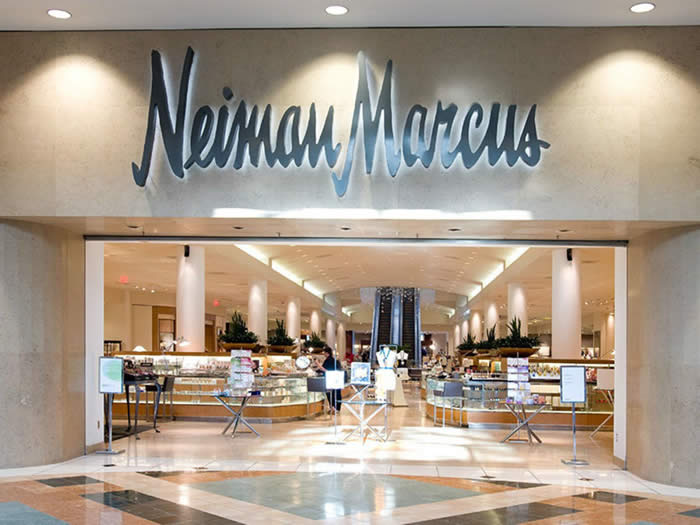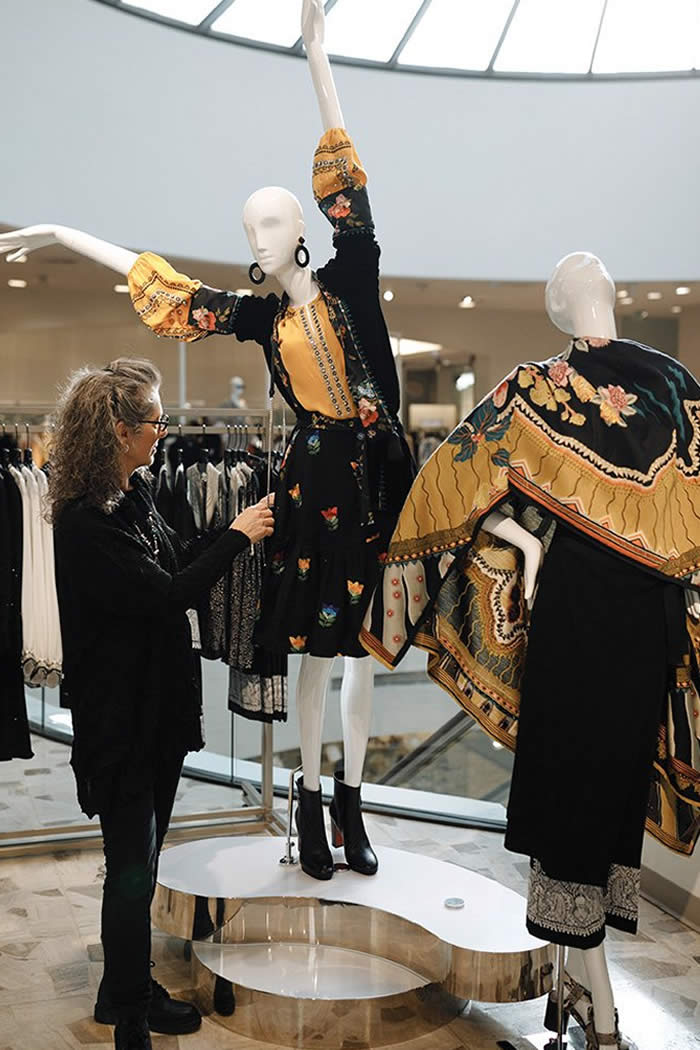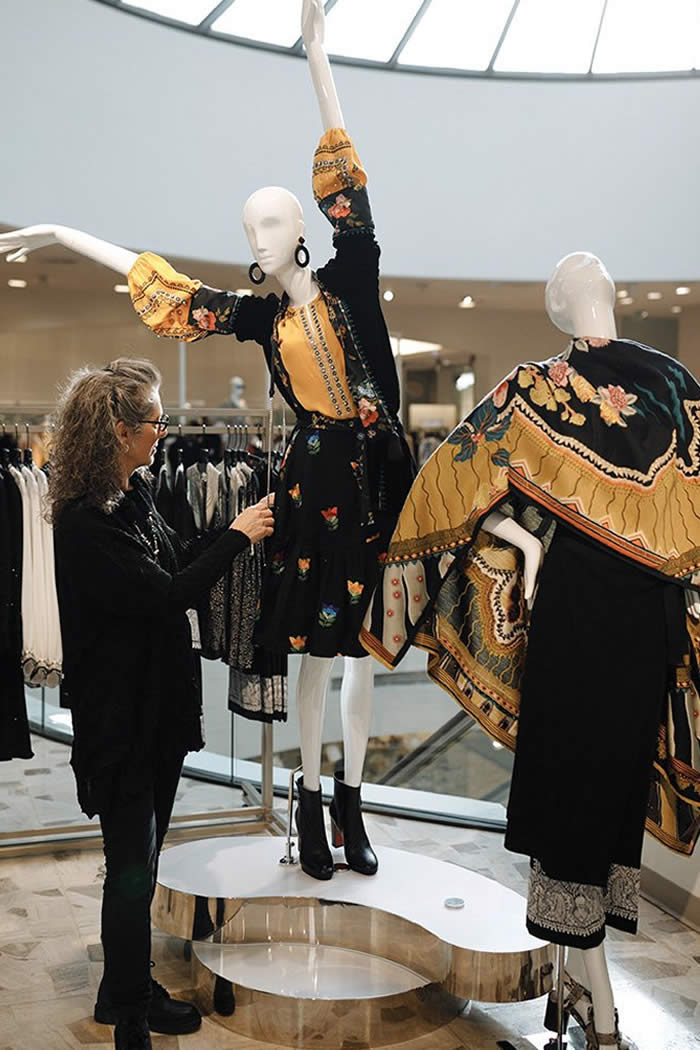Fresh out of bankruptcy virtually debt-free and with new owners, the Neiman Marcus Group Inc. is “really well positioned for the future,” maintains chief executive officer Geoffroy van Raemdonck.
The ceo and his team are formulating a new strategic plan, setting sales and profit goals based on a company that’s streamlining. Neiman’s reduced its headcount to 9,000, from about 12,000 last year, and set seven Neiman Marcus store closings, bringing the count down to 36 Neiman’s stores as well as two Bergdorf Goodman units and five Last Call clearance stores.
A big part of the agenda centers on enhancing offerings, services and conveniences that pump up the digital side of the business, though renovations and upgrades of varying degrees at a handful of key stores are in the works.
Neiman’s has obtained a total of $100 million from certain landlords to fund some store projects, van Raemdonck disclosed.
“Our vision is to become the preeminent luxury customer platform. There are myriad possibilities within that construct. We are not thinking like a department store, but rather a curator of luxury experiences,” the ceo said in an exclusive interview on what’s ahead for the Neiman Marcus Group.
He sees Neiman’s moving beyond the fashion categories it has historically concentrated on. “If you look at our gifting assortment, there is much more electronics, many more products for the home, and more epicure and food than we had before. These are among the bestsellers. I believe we can expand into more categories and experiences.
“We are seeing the demand is there, but shifting to different categories. Customers would like to engage in different ways and we put a lot of emphasis on making sure we have multiple options to engage.”
Neiman’s this year staged 150 virtual events since April, many with designers such as Brunello Cucinelli and Victoria Beckham, and influencers. The top 10 designer events generated more than $100,000 of sales each, said van Raemdonck. The store also offers virtual appointments with Santa, and on Thursday, had a virtual event with Jeff Koons and Michel Bernardaud.
“A one-on-one virtual attraction is really what I am talking about,” said van Raemdonck. “There are potentially other applications for this, when you think about the potential for forming stronger relationships.”
Asked if the notion of luxury is changing, he answered, “Luxury continues to be about the lifestyle and things that are inspiring and connecting emotionally with you. Customers still expect the most beautiful products.”
In Dallas, where NMG is based, office space has been downsized. Two buildings were vacated while the main executive offices at the downtown flagship remain. The company is allowing associates to work from home, and providing more flexible hours. “We basically shifted our work model. It’s an omni work environment, giving more flexibility to associates to adjust to working home, and driving results. We are looking to redefine our headquarters in Dallas,” van Raemdonck said.
While emerging from bankruptcy gives Neiman’s a second wind, there’s no guarantee of long-term survival. The Dallas-based luxury retailer faces numerous challenges in the near and long term — the lack of tourism and anemic store traffic due to COVID-19, and luxury vendors taking their business direct to consumers and shifting to the concession model, which Neiman’s doesn’t embrace.
Neiman’s must also attract more Millennials and Gen Zers, and keep up with rapid lifestyle changes and shifting demands in luxury. Right now, luxury accessories, fine jewelry and beauty are selling because affluent consumers aren’t spending on travel, hotels, theater and other experiences. Special occasion and eveningwear, which Neiman’s historically excelled in, as well as designer sportswear, haven’t been selling well.
Whether Neiman’s will ever reclaim its status as the nation’s leading luxury retailer remains to be seen. It needs to further modernize and regain relevance, though retail experts continue to believe it at least has a definite place on the retail landscape. There’s still lingering talk of a possible merger between Neiman’s and Saks Fifth Avenue, owned by Hudson’s Bay Co. Inc., though no deal is close.
“Reorganizing out of bankruptcy doesn’t mean an reorganization will be successful,” said Kathy Gersch, executive vice president of Kotter International Inc. “If a reorganization was just used for refinancing and doesn’t fundamentally address the problems being seen in a business, then the company is more likely to risk ultimate failure. If there’s a financial restructuring [accompanying] a restructuring of a business, there’s a greater chance of success. It can’t just be a financial exercise.”
“Neiman’s has to figure out where they can win,” said one vendor, who requested anonymity. “The company has gone through a lot and seems like they are still spinning. Saks Fifth Avenue seems in a stabler condition. There’s a clearer strategy. But I’m sure Geoffroy has a vision. Let’s see the plan and what will be different. They have to make changes, without changing the DNA.”
Van Raemdonck isn’t yet disclosing any specifics of the strategic plan, which should be finished and approved by the board early next year. “We will update you when it is complete,” said the ceo. “We believe much of our previous strategic roadmap is still applicable, but we want to reflect the financial flexibility we now have post emergence and also reflect the changes in customer and brand partner behaviors in embracing the digital customer experience.
“We have significantly reduced debt, by $4 billion,” van Raemdonck added. “We got through the bankruptcy with the support of all of our top 50 brands and they continue to support us, and we have taken advantage of the restructuring to really look at the portfolio. We have exited bankruptcy with the right number of stores and right focus on the luxury customer.

“We have also managed to receive more $100 million in cap ex from our landlords,” for renovations.
Since Ares and the Canada Pension Plan Investment Board bought Neiman Marcus Group for $6 billion in 2013, the retailer was burdened by a big debt load, which cut into profitability and limited its ability to invest back into the business. The pandemic and the debt forced NMG to file for bankruptcy in May.
During the bankruptcy, van Raemdonck’s leadership came under criticism for his receiving large bankruptcy-related bonuses and some salary amid company furloughs and consolidations, and for an ill-timed story highlighting his extravagant Dallas home. He declined to comment on all that, other than saying, “We are looking to the future.”
Through a debt-for-equity deal, Neiman’s eliminated more than $4 billion of debt and the $200 million to $300 million in annual cash interest payments stemming from the debt. It emerged from bankruptcy Sept. 25, with its new owners, investment management firms Pimco and Sixth Street and Davidson Kempner Capital Management.
“We are fortunate with the new owners because these are people we knew before,” van Raemdonck said. “They were invested in our debt before, and we got to know them [more] during the restructuring. They are highly supportive because they are deeply invested with equity and they own a term loan.
The business is run by the management. They (owners) have made a choice to have a professional board that will be involved in critical decisions. They have empowered a board with a skill set and background which are both very diverse. They really have a skill set in digital, customer relationships and luxury that is the cornerstone of our transformation. We don’t have a board of private equity professionals. We have a board of forward-thinking industry players.
“We are really positioned in a way to have flexibility to invest in the future, which is so important today because the world is moving very fast,” van Raemdonck added.
He said three Neiman’s stores, including those in the Bal Harbour Shops in Miami and Tysons Galleria in McLean, Va., will be renovated, and discussions with brands regarding changes are under way. “We literally got some rent reductions and have received cash reimbursements which allow us to renovate and upgrade multiple stores, to either fully or partially renovate, or at least invest in.”
Asked which landlords are contributing cash for renovations, van Raemdonck said, “We are not disclosing this; however, we will fully renovate three stores and make significant upgrades in four stores within the next two years. It’s all about changing the offering and customer experience.”
On upgrading Bergdorf Goodman, no upcoming projects were cited, though van Raemdonck cited the opening of Bergdorf’s café/bar at the beginning of this year in the men’s store, and the BG on Fifth outdoor restaurant so people could still dine at BG during the pandemic. “We will continue to invest in the Bergdorf brand and its Fifth Avenue store,” he said. “The web site and app were launched about a year ago as a sign of our commitment to expand the Bergdorf brand digitally.”
This year, Neiman’s closed stores in Fort Lauderdale and Palm Beach, Fla.; Bellevue, Wash.; Hudson Yards in Manhattan, and Mazza Gallerie in Washington, D.C. The Walnut Creek, Calif., store will close at end of January and the Natick, Mass., store will close but no closing date has been set yet.
Asked if more stores, other than the seven, could close, van Raemdonck said, “We are always assessing our store footprint to ensure it is optimal to enhance revenues, overall profitability, and our integrated retail strategy. We have no other store closures to announce at this time.”
He described Neiman’s relationships with brands during the five-month bankruptcy as “very supportive and flexible — and they continue to be. The brands really stood with us.
“We have resumed our normal payment terms with the brands,” he said. “It varies by brand but we are known for paying brands promptly. It really varies by brand. The bottom line is we are in a much better situation than other retailers. The brands have been shipping us as soon as they could and are willing to do reorders with us. They are extremely flexible. We read the data quickly and when we say we need more of this or that, they really quickly help us. A lot of brands prioritize shipping to us.”
While upscale retailers have embraced leased designer shops, most noticeably in leather goods and European contemporary sportswear, it’s been Neiman’s policy not to have concessions on its selling floors, with a very few exceptions such as Louis Vuitton and Chanel, Neiman’s top vendor.
Asked if Neiman’s is rethinking the approach, van Raemdonck replied, “We are not providing comment on the nature of our engagement with brands. We have a very limited number of leased departments given the nature of our customer relationships, which go through our own sales associates who curate the best assortment across brands.” Chanel’s switch from wholesaling to department stores to the leased shop model meant some profit loss for Neiman’s.
In 1999, Neiman Marcus became the first luxury business to launch e-commerce, which last year generated about $1 billion in sales, or more than 30 percent of NMG’s total revenue.
Van Raemdonck said luxury e-commerce has historically represented a trade-off, providing convenience but not the social element, service, and touch-and-feel aspects of shopping in a luxury store. However, Neiman’s, he said, “is actively breaking trade-offs by creating new ways for customers to request assistance or build a relationship [with an associate], and get assistance anytime, anywhere and via any channel.
He noted that Neiman’s has 60 digital stylists, 200 digital client advisers and 4,000 sales associates who use the Connect tool to provide a better customer experience.
“We will continue to invest in the Connect tool. Connect is unique to NMG — no one else offers associates a tool with seamless integration in managing customer relationships, including styling, clienteling, decision support, mobile point of sale and more. Connect provides our associates with incredible leverage — they’re able to manage larger pools of customers while maintaining the personal touch that is the magic of Neiman Marcus.
An associate can be responsible for supporting as many as 5,000 customers, but realistically could only be delivering tailored service to the top 50 or 100. By using Connect to support customer interactions, customers gain access to wider selections and our associates are empowered to succeed and thrive. Additionally, Connect is not a customer-facing app, which means the customer doesn’t have to learn any new engagement behaviors.
“With the accelerated rollout of NMG’s digital clienteling tool, Connect, we have generated more than $100 million in demand as associates utilize it to connect with their customers from afar. That number is far higher if we look at the sales that were influenced by Connect as we had 2.8 million customer engagement sessions on Connect since we launched it in March,” he added.
“We really want to get to the next wave of digital. It’s not about saying digital is another channel and helpful in a pandemic. For me, digital is a channel for richer relationships and service, curation and scale.
“More than half of our sales are digitally influenced,” van Raemdonck said. “We have two million customer interactions [annually] on Connect with sales associates interacting, recommending products, giving them advice. These are really digitally influenced. You can only do that if you have the tools, the relationships and the sales associates. Very few retailers have all three.”


